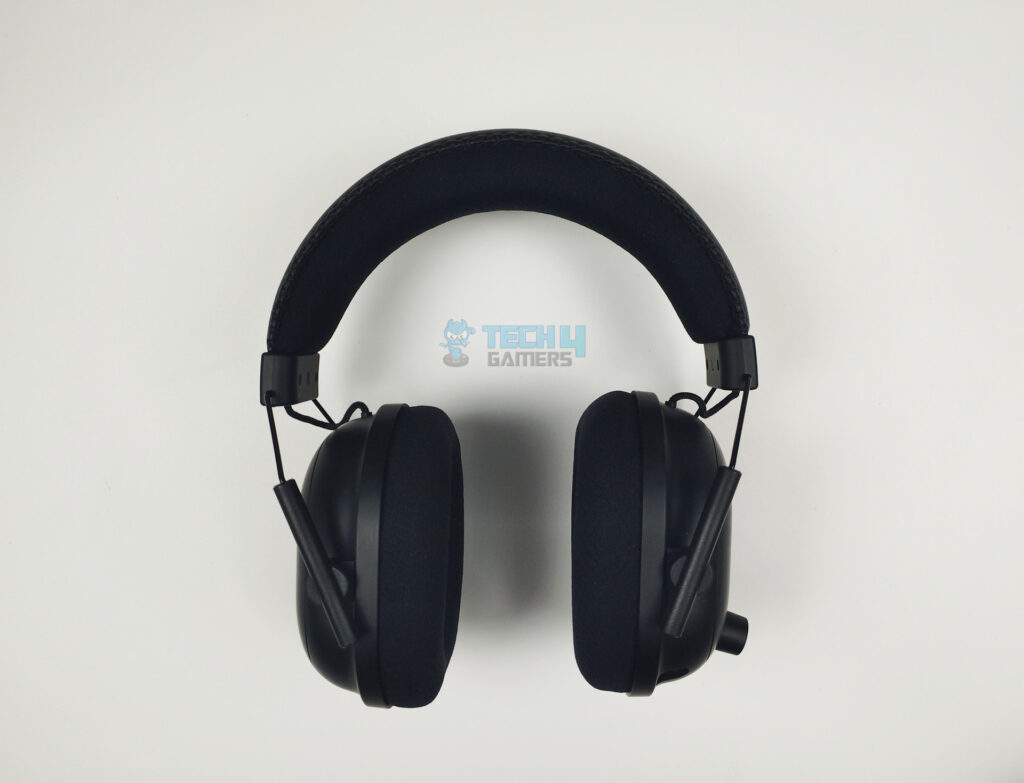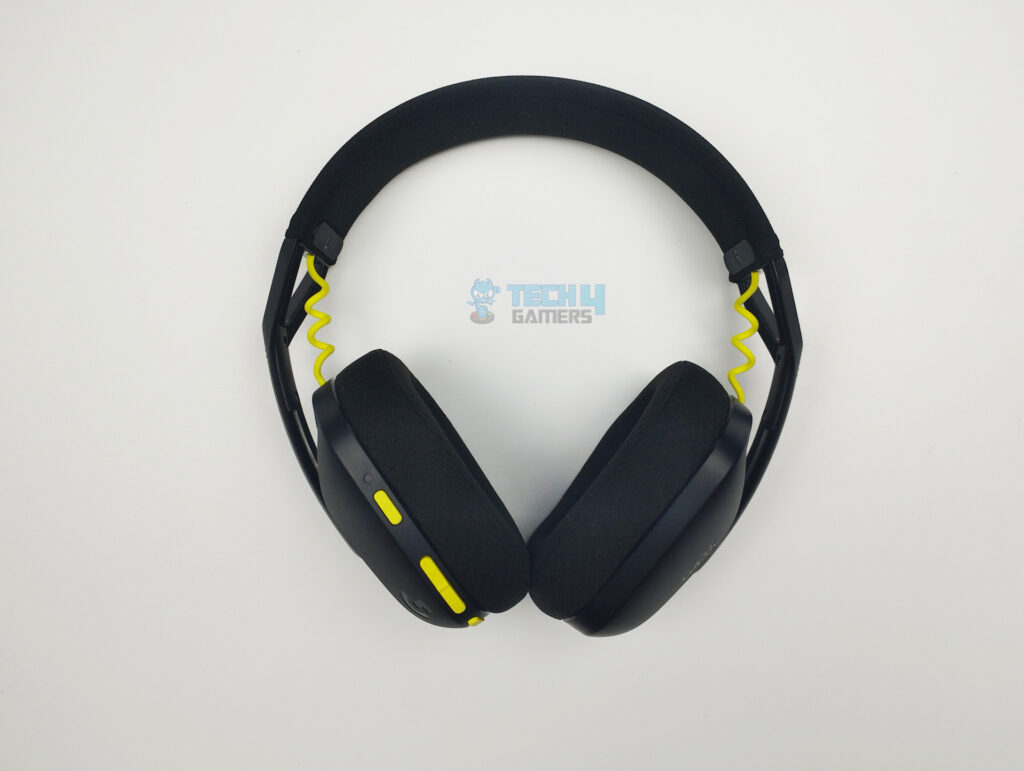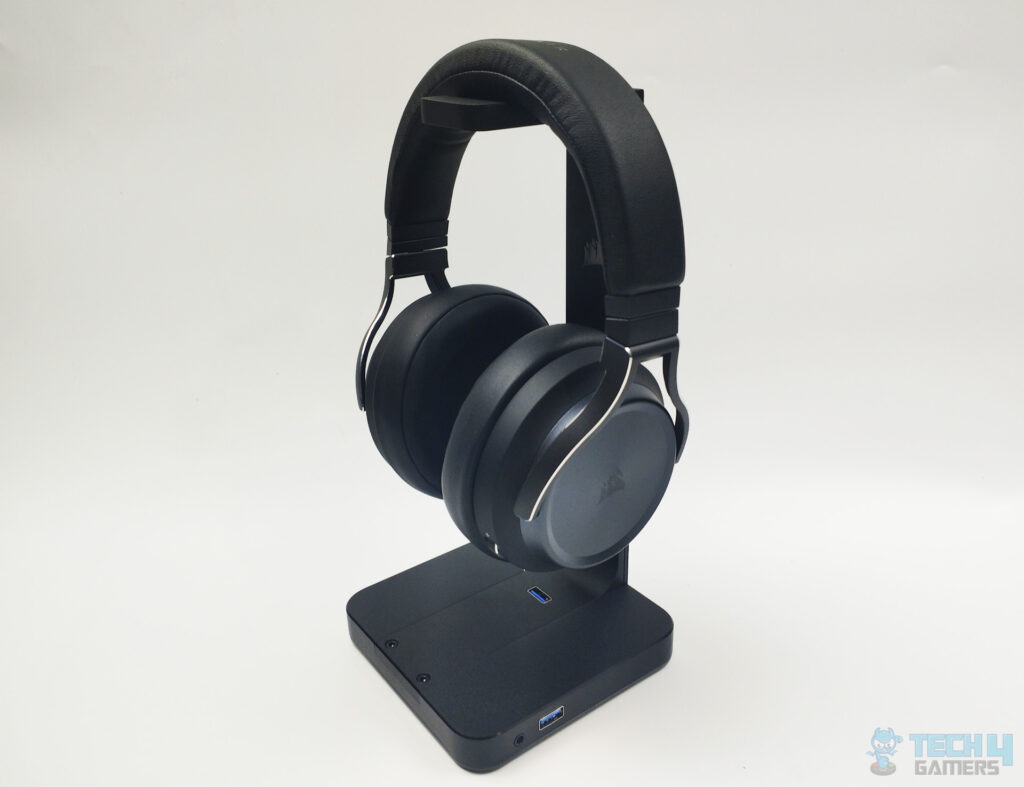Wireless mice from Razer & Logitech consistently score indistinguishable results from their wired counterparts – now offering 4000Hz polling rate dongles. Strangely enough, this behavior does not apply to keyboards or headsets. There are considerable drawbacks, even at the highest end of peripherals, when a keyboard or headset is wireless. We will cover the caveats of wireless keyboards separately in a different post. Sound, by far, takes the hardest hit going from wired to wireless.
Wireless headsets have come a long way from the early days of the first Corsair Void wireless, but audiophiles cringe at the thought of 2.4Ghz gaming headphones; manufacturers have only recently figured out how to send wireless audio from the microphone to the PC in a separate channel with very good channel switching, but that still does not seem to be enough.
The Problem With Wireless: An Act Of Balancing Fidelity With Latency
When designing wireless headphones, a manufacturer has to choose between either audio frequency or latency. Bluetooth headphones often pack a punch, but they are nowhere suitable for Gaming, with even the lowest latency Bluetooth 5.2 – Qualcomm Aptx-LowLatency Codec Headphones not getting anything less than 80ms.
Qualcomm often advertises getting as close to 30ms as possible, but testing shows no Bluetooth headphones getting lower than 80ms of delay. This means if you were playing a multiplayer game and getting about 120ms of ping, a further 80ms is needed for you to hear footsteps, a gunshot, or a door opening behind you.
How Audio Latency Is Tested
These latency scores vary quite a bit; the most well-done database on Wireless Audio Latency is from RTINGS. In theory, the methodology is simple: the signal from a computer is split into two. One comes out from a wired headphone, the other from the wireless headphone in question listened to with a single microphone. The difference in time between the two waveforms is the latency the wireless headphones suffer from. There are better testing methods with lower margins of error, but this is the least invasive one.
The difference/delay between the two waveforms shows how much longer it took for the wireless headphones to finally play the sound. On average, a 22ms headset is regarded as okay for gaming; whether this is enough for the audio delay is debatable, but for someone new to the topic, here are 4 different wireless Codecs/technologies, each with their strengths and weaknesses, but everything other than 2.4 GHz or 5.8 GHz is not suitable for gaming.
| Connection Type | Latency | Use Case | Feels Like |
|---|---|---|---|
| Avg Bluetooth Connection | 180ms-320ms | Unplayable. Game and audio completely out of sync. | "bruh what is this" |
| Qualcomm-aptX LL mode | 40ms-160ms | Fine for story games, still nowhere mature for shooters. | "Something feels off" |
| 2.4Ghz Wireless | 12ms-120ms | Depends on implemenation, most stay under 60ms, newer tech is under 28ms | "Latency?" |
| 5.8Ghz Wireless | 4ms-90ms | Very application dependant but least latency in theory. | "Feels like a wire" |
Wireless Technologies From Each Leading Brand
| Headphone | Delay | Sound Quality |
|---|---|---|
| Astro A50 2019 [Xbox Station] | 12-16ms | Very Good for Music and Gaming |
| Razer Blackshark v2 Hyperspeed (Not Pro) | 12-18ms | Good for Gaming, Okay for Music could have been better. |
| Logitech G Pro X | 16-18ms | Great for Gaming and Okay for Music |
| Audeze Maxwell | 16-18ms | Audiophile Grade, Best Sounding Wireless Headset to date. |
| Corsair HS80 Max | 32-42ms | Okay in game, not so good at music, Excellent Mic. |
| Steelseries Artis Nova | 32-42ms | Great sounding in Game and Music. |
The table shows something more nuanced; it is not necessarily true that a headset that is lower in latency performs worse in audio quality. It is much more dependent on how the manufacturer tuned the drivers, wireless channel switching, and wireless power transmission. Let’s look at what I think each manufacturer is getting right and wrong in their wireless tech.
Manufacturers that use dedicated transceiver stations for their wireless headphones have room for larger antennas, can pull more power, thus broadcast and seamlessly switch between channels, and use two separate channels for mic and audio. Think of it as a dedicated router for wireless headphones.
Razer Hyperspeed

- Razer seems to have dialed in their wireless tech to give the lowest latency possible since their first Viper Ultimate came out; their wireless tech in Mice and Keyboards is, for now, undoubtedly superior, with the highest polling rates and lowest latency. This does show up in audio gear.
- Their Blackshark v2 Hyperspeed headphone has the lowest latency in any 2.4Ghz headphone tested to date (as low as 10ms) but interestingly, the Blackshark v2 Pro doesn’t have the same low latency and performs around 30ms while sounding much better.
- You’re much more likely to notice the sound quality than any delay, but overall, Razer’s wireless transmission seems to be made with more low latency than high fidelity.
- I would only end up getting the Blackshark v2 Hyperspeed if I did not care about music. However, all of their headphones perform well in latency tests. Even older Nari Ultimates were under 30ms. The new releases and budget ones all score under 20-30ms and near 10ms in some cases.
Wireless Tech: Excellent
Astro & Logitech

- Astro was the first manufacturer to use 5.8 GHz in their headphones; they did this very early on. 5.8 GHz is a higher-end alternative frequency band for wireless audiophiles and studio equipment.
- Astro used this in their 1st gen, 2nd gen, and the Gen 3 Astro A50 headsets. When the Astro A50 Gen4 came out, Astro went back to using regular 2.4Ghz. When reaching out to Astro, they said it made more sense to use 2.4Ghz in the Gen 4 because they wanted to avoid interference. Astro achieves the lowest latency in any 2.4Ghz headset while sounding very good. This is mostly because of the base station.
- The Astro A50 needs a Gen5 refresh; given how the A50s have aged, Astro was ahead of its time in wireless audio. Logitech acquired Astro in 2017, and the focus seems to be on dissolving Astro into Logitech instead of Astro releasing its dedicated products.
- Logitech headphones seem to be a mixed bag; some models, like the G Pro X, are very good all-rounders. Striking a balance between Audio and Latency, their microphone might not sound good at all, but the latency scores are consistently under 20ms on high-end headphones tested.
- The G735 sits under 12ms, and the G Pro X sits under 25ms. However, the G733 exceeded 100ms, which is not tolerable in a gaming headset.
Wireless Tech: Excellent on select headsets, Poor on some headsets.
Corsair

- Corsair uses regular 2.4Ghz dongles and none of the headphones they produced score under 60ms. Audio latency is not Corsair’s strong suit. However, they have the best microphones in any of the wireless headphones.
- I cannot confirm if Corsair is using different channels for the microphone signal and Audio. Corsair’s market is mostly PCs, and they aren’t the first choice when it comes to console gaming; using a dedicated headphone dock/base station could result in an endgame Corsair Headset.
- Corsair had the most potential in the wireless headphone space, but in 2023, they seemed to be behind the competition.
- A virtuoso with a base station priced under $200 and scoring under 9ms of latency would result in an incredible headset from Corsair.
- Their software iCUE and their firmware are often buggy at launch and are only patched later in the second or third release. First-generation virtuosos and HS70s had many interference issues with USB 3.0 ports that were patched later in software.
Wireless Tech: Mediocre
Steelseries
- If it wasn’t for the Maxwell, the Nova Pro would have been the best gaming wireless headset to beat. Steelseries was the only wireless headphone manufacturer that used the base station apart from Astro, but their latency tests aren’t as low as Astro’s.
- They score around 22-32ms as well, which is the average latency for 2.4Ghz headphones.
- The price of $350 makes them the hardest-to-recommend headset when the Maxwell sounds quite a bit better than the Nova Pro.
- The battery swap system is exclusive to their headsets and saves them from the pain of charging the headset or plugging it in, but at $350, it is still up for criticism.
- Given the latency score, neither their mouse, keyboards, or headphones has come close to the best latency tests. SteelSeries doesn’t have the same wireless technologies that Razer or Logitech have.
Wireless Tech: Mediocre
Audeze
- This is the one I wanted to talk about for a while. It’s not a gaming company but an audiophile headset manufacturer. It brought us the HyperX Cloud Orbit S based on the Audeze Mobius, The Audese Penrose, and Now the best-sounding audiophile headset we have heard.
- It was praised both by Gaming and audiophile reviewers for offering what it does; however, it is not the Lowest-Latency Headset. It performs somewhere around 22-30ms in latency tests.
- It emphasizes sound quality more than latency. The microphone and software department loses to the more mature wireless headphone manufacturers, but depending on your preferences, it can be very easy to overlook.
- Audeze is the only manufacturer in the wireless headphone space that uses Plannar diaphragms for the headphones. Planar vs Dynamic Headphone drivers need their article. The short version is that, yes, when tuned very well in a closed-back headphone planar, headphones will sound better.
- Audeze, however, is still using a regular 2.4Ghz dongle. If Audeze headphones were to use a base station, it would compromise console compatibility and drive the price even higher, but it could have made for an even more advanced wireless headphone.
Wireless Tech: Good/Excellent
Conclusion
Wireless Audio latency is real and not talked about enough. Latency doesn’t make for good marketing material, and often, latency is overlooked as it is very hard to notice under 40ms. The only situation where latency is a concern is competitive gaming.
People talk enough about footsteps and directional audio, but no one is talking about how delayed your audio could be if you choose wireless. If you don’t play eSports titles at the highest ranks, you’re more than likely to be fine under 40ms, but if you do, there is only the Blackshark Hyperspeed, G733, and the Astro A50 as choices, or you could stick to using a wired headset with no compromises.
Thank you! Please share your positive feedback. 🔋
How could we improve this post? Please Help us. 😔
[News Reporter]
Malik Usman is student of Computer Science focused on using his knowledge to produce detailed and informative articles covering the latest findings from the tech industry. His expertise allows him to cover subjects like processors, graphics cards, and more. In addition to the latest hardware, Malik can be found writing about the gaming industry from time to time. He is fond of games like God of War, and his work has been mentioned on websites like Whatculture, VG247, IGN, and Eurogamer.


 Threads
Threads

